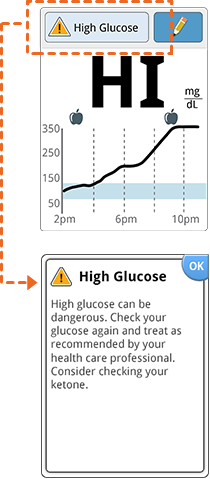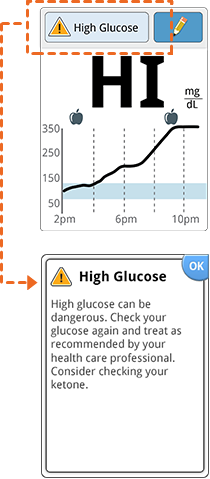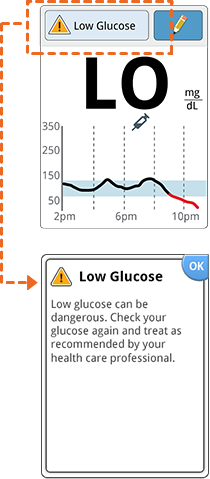Understanding Sensor Readings
Note:
- The graph displays glucose readings above 350 mg/dL at 350 mg/dL. For sequential readings above 350 mg/dL, a line is displayed at 350 mg/dL. You can get your Current Glucose number up to 400 mg/dL and Glucose Trend Arrow when you scan your Sensor.
- The
 symbol may appear, indicating the Reader time was changed. Gaps in the graph may result or glucose readings may be hidden.
symbol may appear, indicating the Reader time was changed. Gaps in the graph may result or glucose readings may be hidden. - All available glucose data is used to make your graph so you can expect to see some differences between the graph line and previous current glucose readings.
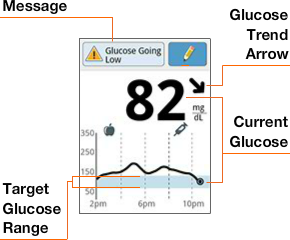
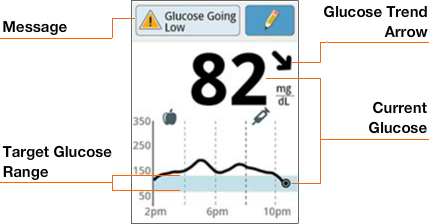
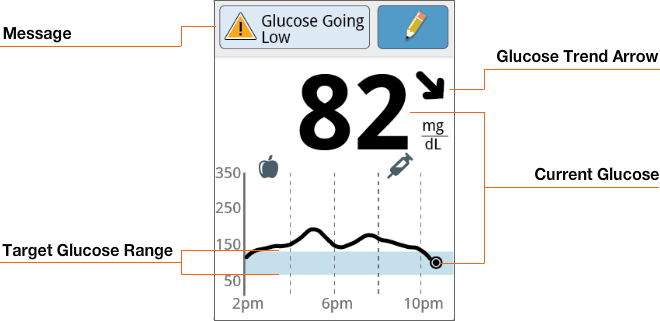
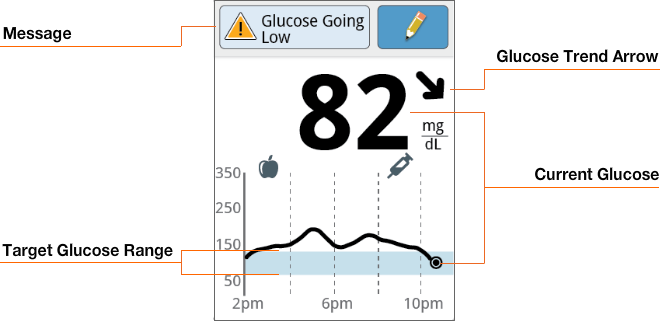
The Glucose Trend Arrow gives an indication of the direction your glucose is going.
If your glucose is projected to be higher than 240 mg/dL or lower than 70 mg/dL within 15 minutes, you will see a ![]() or a
or a ![]() message on the screen. You can touch the message button for more information and set a reminder to check your glucose.
message on the screen. You can touch the message button for more information and set a reminder to check your glucose.
- If you are not sure about a message or reading, contact your health care professional before you do anything.
- Messages you receive with your glucose readings are not related to your glucose alarm settings.
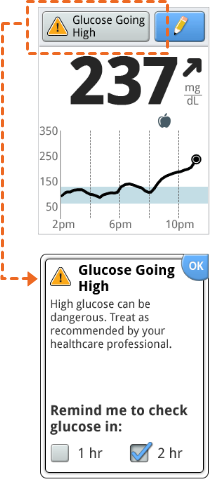
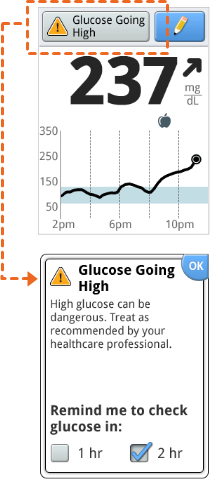


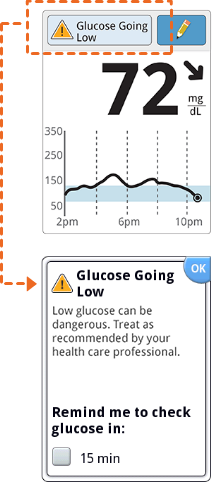
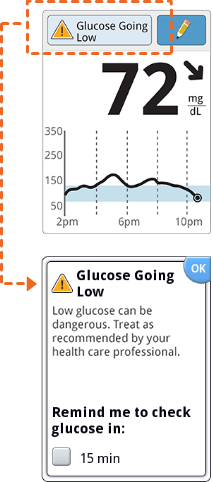


If your glucose is higher than 240 mg/dL or lower than 70 mg/dL, you will see a ![]() or
or ![]() message on the screen. You can touch the message button for more information and set a reminder to check your glucose.
message on the screen. You can touch the message button for more information and set a reminder to check your glucose.
- If you are not sure about a message or reading, contact your health care professional before you do anything.
- Messages you receive with your glucose readings are not related to your glucose alarm settings.
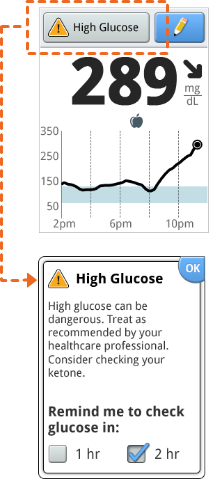
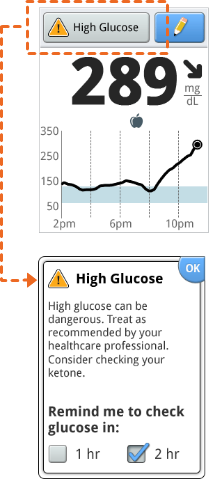


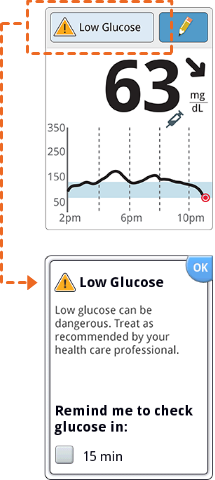



If LO appears on the Reader, your reading is lower than 40 mg/dL.
If HI appears on the Reader, your reading is higher than 400 mg/dL.
You can touch the message button for more information. Check your blood glucose on your finger with a test strip. If you get a second LO or HI result after doing a blood glucose test, contact your health care professional immediately.
Note:- If you are not sure about a message or a reading, contact your health care professional before you do anything.
- Messages you receive with your glucose readings are not related to your glucose alarm settings.
